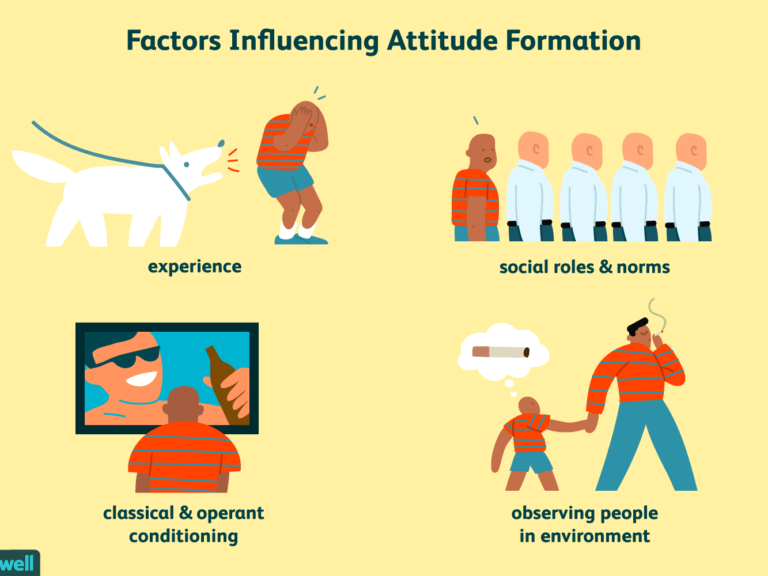
Information from in excess of 4 million tests completed somewhere in the range of 2004 and 2016 show that Americans’ attitudes toward certain social groups are getting less one-sided after some time, as indicated by research distributed in Psychological Science, a diary of the Association for Psychological Science. The discoveries show that members’ self-revealed (unequivocal) attitudes with respect to groups characterized by age, handicap, body weight, race, skin tone, and sexuality have all moved toward nonpartisanship over the range of 10 years. Essentially, the information additionally demonstrated that members’ more programmed (implicit) attitudes toward race, skin tone, and sexuality have likewise diminished in inclination over the long haul.
“We give the main report of long haul change in both implicit and express attitudes – estimated from a similar individual – towards various social groups,” says mental researcher Tessa E. S. Charlesworth of Harvard University, first creator on the investigation. “This exploration is significant on the grounds that it shows that, as opposed to past suppositions that implicit attitudes were steady highlights of the brain or society, implicit attitudes show up, actually, to be able to do long haul solid change.”
Charlesworth and Harvard University brain research educator Mahzarin R. Banaji utilized factual models like those utilized by financial forecasters to break down change in information gathered by means of the Project Implicit site from January 1, 2004 to December 31, 2016. Just members living in the United States were remembered for the investigations.
To measure members’ programmed, or implicit, attitudes toward various groups, the specialists utilized varieties of the Implicit Association Test (IAT). For every social gathering analyzed in this investigation, members completed a modernized IAT task in which they squeezed a particular PC key to order combines of words identified with social groups and properties. In the age IAT, for instance, the specialists contrasted how long it required for members with react when youthful and great had a similar key and old and terrible had a similar key with what amount of time it required for them to react when youthful and awful and old and great had similar keys. As a rule, quicker reactions to specific pairings in the IAT are thought to mirror a more grounded programmed relationship between the ideas and properties in those pairings.
For every social gathering, members additionally gave self-revealed evaluations expected to gauge their unequivocal attitudes toward the gathering.
In accordance with wide social patterns, members’ unequivocal attitudes toward the social groups demonstrated diminishing predisposition over the long haul:
“Our investigations uncovered that all self-revealed attitudes about age, incapacity, body weight, race, skin tone, and sexuality have moved towards less bias over the previous decade,” Charlesworth clarifies. “The paces of unequivocal disposition change went from a fast 49% lessening in express inclination towards gay and lesbian people, to a moderately more slow 15% reduction in express predisposition towards overweight people.”
What’s more, members’ implicit affiliations likewise demonstrated striking long haul change:
“Implicit sexual direction, race, and skin-tone attitudes have all diminished in bias over the previous decade, with the paces of progress going from a fast 33% decline in implicit inclination towards gay and lesbian people to a moderately more slow 15% reduction in implicit predisposition towards darker looking people,” says Charlesworth.
The change in implicit attitudes identified with sexual direction arose over all ages and segment groups, while change in implicit race and skin-tone attitudes seemed most grounded among twenty to thirty year olds and fluctuated by members’ race.
The pattern toward lack of bias in implicit attitudes didn’t reach out to the entirety of the social groups, notwithstanding. For instance, implicit attitudes toward old people and crippled people gave off an impression of being moderately steady over the long run. What’s more, implicit attitudes toward overweight people even demonstrated a slight move toward expanded predisposition over the long haul.
“Since implicit attitudes exist to a great extent outside of cognizant mindfulness and are generally hard to control, the supposition has been that they won’t change or, at any rate, will change gradually,” Charlesworth notes. These investigations give proof in actuality, demonstrating that populace level implicit attitudes can for sure change over the long haul.
One remarkable inquiry is the reason a few attitudes, for example, sexuality attitudes, have all the earmarks of being changing such a great amount of quicker than others, for example, age attitudes. Charlesworth and Banaji plan on proceeding to follow attitudes toward various social groups, looking at how the patterns anticipated by their present examinations line up with genuine information gathered in 2017, 2018, and past. Such correlations can uncover how huge social functions, for example, races and new social strategies, may assume a part in molding populace level attitudes on both express and implicit measures.
“Responding to this inquiry can help control applied conversations on the plan of approaches or intercessions that serve to move all attitudes – towards all social groups on both implicit and unequivocal measures – toward more noteworthy value,” Charlesworth closes.
Deidentified and cleaned information for this investigation, alongside information examination contents, have been made freely accessible by means of the Open Science Framework. The crude deidentified information and the materials from the Project Implicit exhibit site data set are documented on the web. This article has gotten the identifications for Open Data and Open Materials.
